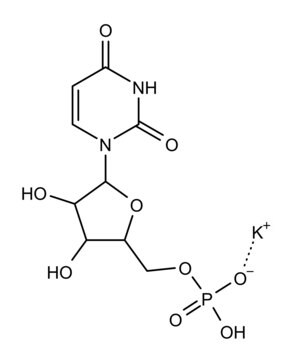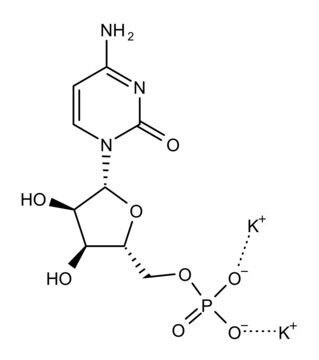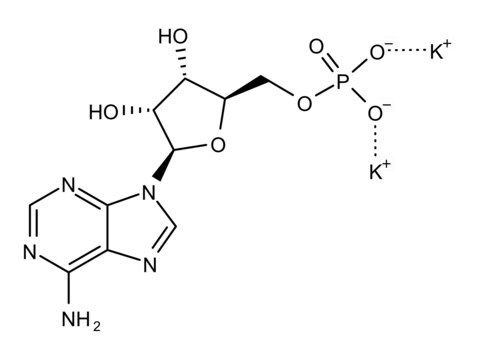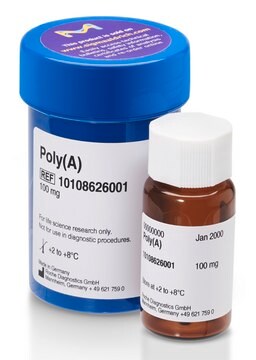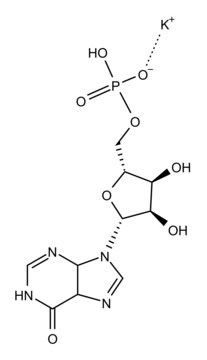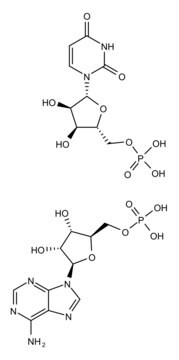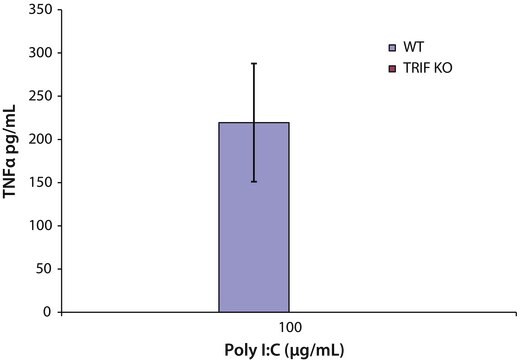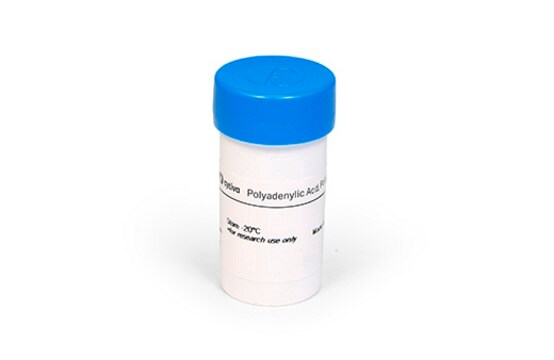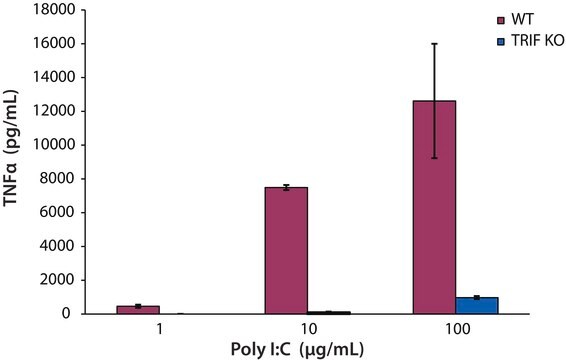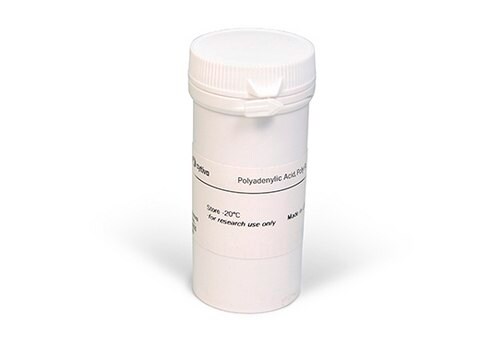P4404
Polyganylsäure Kaliumsalz
lyophilized powder
Synonym(e):
Poly(G) potassium salt
Anmeldenzur Ansicht organisationsspezifischer und vertraglich vereinbarter Preise
Alle Fotos(2)
About This Item
Empfohlene Produkte
Biologische Quelle
enzyme from (synthesis)
Qualitätsniveau
Assay
≥95% (TLC)
Form
lyophilized powder
Qualität
≤5% free nucleotides
Löslichkeit
water: 19.60-20.40 mg/mL, clear to slightly hazy, colorless to light yellow
Lagertemp.
−20°C
Suchen Sie nach ähnlichen Produkten? Aufrufen Leitfaden zum Produktvergleich
Allgemeine Beschreibung
Polyguanylic acid takes up a four-stranded helical structure. It is synthetically produced in Thermus thermophilus from guanosine diphosphate (GDP) and its synthesis is catalyzed by the enzyme polynucleotide phosphorylase.
Anwendung
Polyguanylic acid (PolyG) is used to study the effects of ionizing radiation on formation and stability of G-quadruplex structures and as a target molecule for physicochemical studies of electronic excitation (vibrational spectra) of guanosine.
Polyguanylic acid potassium salt has been used:
- as a ligand for surface neuropilin-1 (NRP1) for internalization studies
- for intercalation studies with trisubstituted and disubstituted triazole-linked phenyl derivatives CL41, CL42 and CL2r50 using voltammetry method
- as a synthetic polynucleotide for agarose gel electrophoresis analysis
Biochem./physiol. Wirkung
Polyguanylic acid acts as a ligand for scavenger receptor and reduces the surface expression neuropilin-1 in endothelial cells.
Angaben zur Herstellung
Prepared from GDP using polynucleotide phosphorylase
Lagerklassenschlüssel
11 - Combustible Solids
WGK
WGK 3
Flammpunkt (°F)
Not applicable
Flammpunkt (°C)
Not applicable
Persönliche Schutzausrüstung
Eyeshields, Gloves, type N95 (US)
Hier finden Sie alle aktuellen Versionen:
Besitzen Sie dieses Produkt bereits?
In der Dokumentenbibliothek finden Sie die Dokumentation zu den Produkten, die Sie kürzlich erworben haben.
Kunden haben sich ebenfalls angesehen
Venugopal Karunakaran et al.
Journal of the American Chemical Society, 131(16), 5839-5850 (2009-04-04)
Guanosine monophosphate (GMP) in aqueous solutions has been studied with femtosecond broad-band transient absorption spectroscopy and by quantum-mechanical calculations. The sample was excited at 267 or 287 nm and probed between 270 and 1000 nm with 100 fs resolution, for
Zhong-yuan Kan et al.
Nucleic acids research, 35(11), 3646-3653 (2007-05-10)
Chromosomes in vertebrates are protected at both ends by telomere DNA composed of tandem (TTAGGG)n repeats. DNA replication produces a blunt-ended leading strand telomere and a lagging strand telomere carrying a single-stranded G-rich overhang at its end. The G-rich strand
Picosecond infrared probing of the vibrational spectra of transients formed upon UV excitation of stacked G-tetrad structures.
McGovern DA, Quinn S, Doorley GW, et al.
Chemical Communications (Cambridge, England), 28, 5158-5160 (2007)
D Grygoryev et al.
Radiation research, 173(1), 110-118 (2010-01-01)
The ability of guanine-rich sequences to form quadruplex structures in telomeres for example is important in a number of biological processes such as aging, carcinogenesis and gene regulation. Ionizing radiation can cause damage to guanine moieties that can affect the
A study of the pH dependence of electronically excited guanosine compounds by picosecond time-resolved infrared spectroscopy.
McGovern DA, Doorley GW, et al.
Photochemistry and Photobiology, 8, 542-548 (2008)
Unser Team von Wissenschaftlern verfügt über Erfahrung in allen Forschungsbereichen einschließlich Life Science, Materialwissenschaften, chemischer Synthese, Chromatographie, Analytik und vielen mehr..
Setzen Sie sich mit dem technischen Dienst in Verbindung.